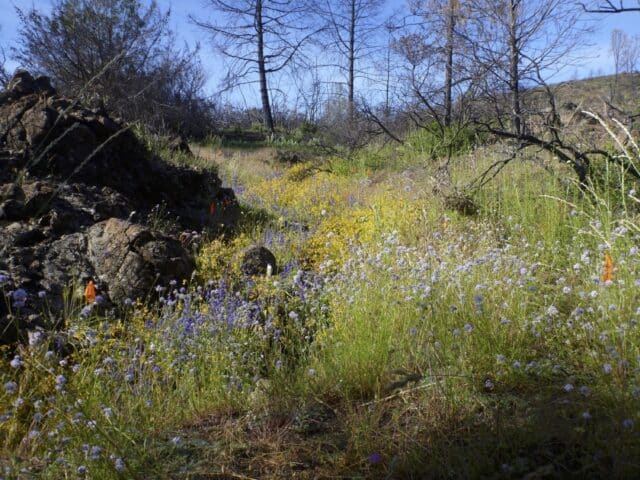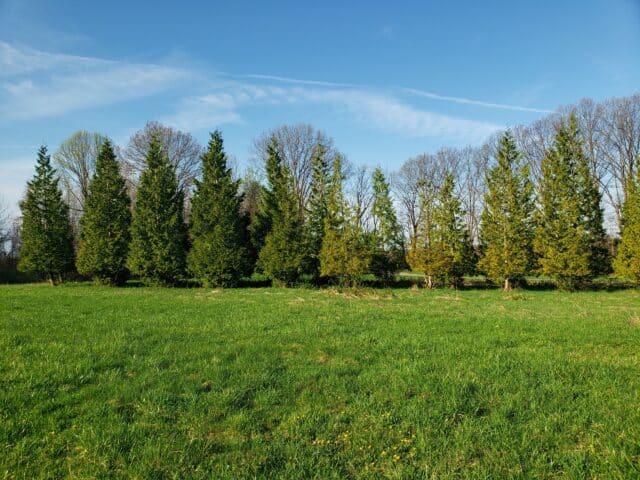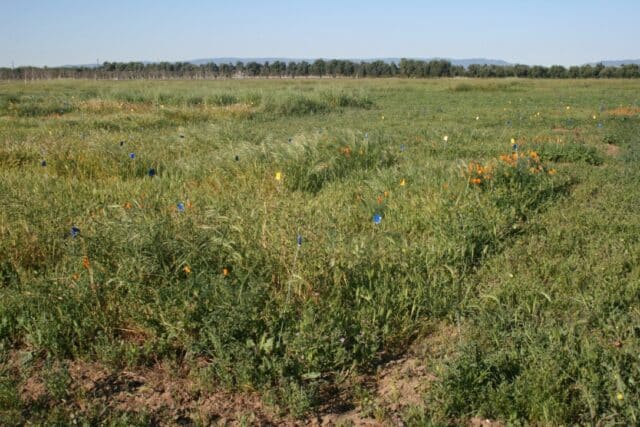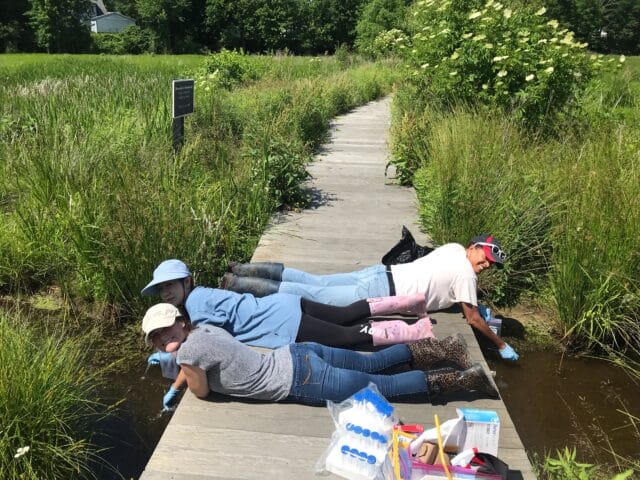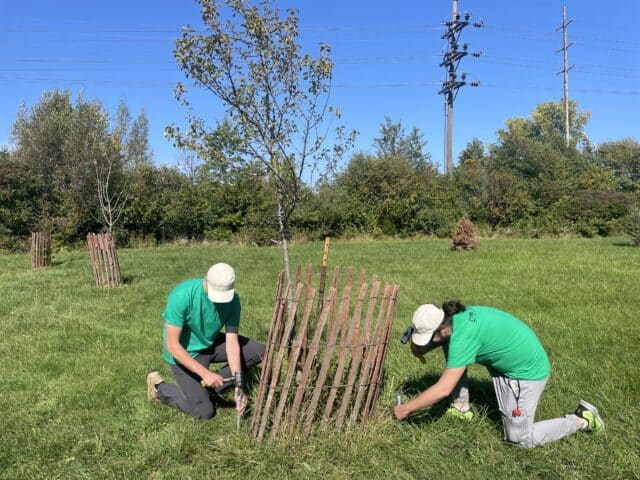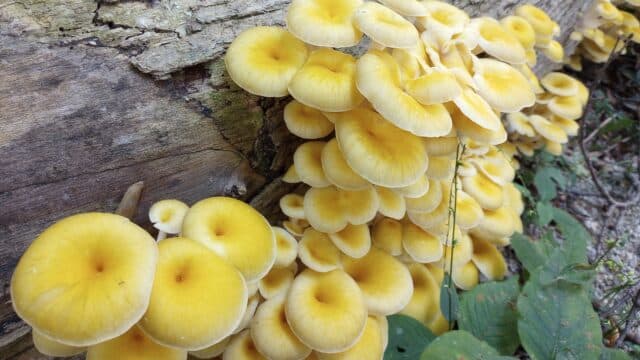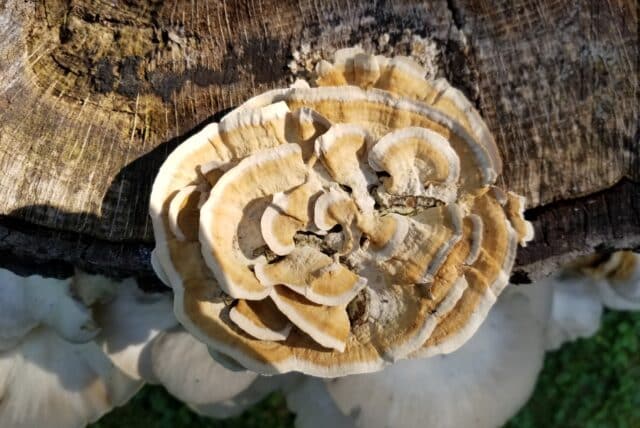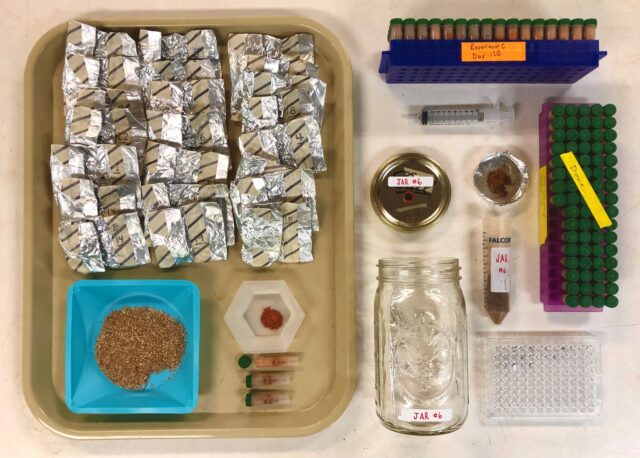
As Rhododendron collections manager at Holden Forests & Gardens I wear many ericaceous hats, but at the core of my job is curating the Holden Rhododendron Collection. This role differs from most of the other folks in the Holden Research Department, who are actively trying to create new knowledge and solve problems. My job is to build a plant collection that facilitates this.
Having one person to curate a collection of one group of plants is a unique role at a public garden, but it makes sense for us. Between the David G. Leach Research Station, Helen S. Layer Rhododendron Garden, and the Eliot and Linda Paine Rhododendron Discovery Garden, HF&G has nearly 60 acres dedicated to Rhododendron collection and display. When we think about building a collection, we think about four main institutional focuses: research, conservation, education, and display.
For Rhododendron, the display part is easy (if you can keep them happy). There are few plants that rival a Rhododendron in full bloom. They have a diversity of forms and bloom times, many unique leaf shapes and textures, a spectrum of leaf retention, and distinct preferences for different garden locations. There are also almost too many to choose from for our gardens. There are approximately 1,000 wild-occurring Rhododendron species world-wide and more than 25,000 horticultural selections. Having a solely ornamental collection is all well and good, but we can use our other goals to filter these plants into more focused groups.
Northeast Ohio, and the Great Lakes region overall, has a long history of Rhododendron hybridizing. Holden is even part of this story, with our David G. Leach Research Station. David Leach was a world expert on Rhododendron and donated his Rhododendron breeding program to Holden Arboretum in 1986. We carry on that legacy by continuing breeding and by preserving his vast plant collection. David Leach’s contemporaries, Anthony Shammarello of South Euclid, Paul Bosley of Mentor, and Peter Girard of Geneva were creating and selecting rhododendrons of their own.
Plants created by these men have shaped our collection, and we can use these highly ornamental and regionally adapted rhododendrons to educate our visitors about the diversity rhododendrons, the art and science of plant breeding, and our deep regional history.
When building a quality research and conservation collection, we think about plants of wild origin – plants that you would find in the mountains and forests of the world. For plant collections in general, knowing exactly where a plant came from in the wild adds invaluable data for anyone who might wish to use them for a research project or in plant conservation. Because of this, Holden staff regularly go on plant collecting trips to find new plants for our collections.
Field Station Specialist Jing Wang and I just recently returned from a plant collecting trip to the Ned Smith Center for Nature and Art in central Pennsylvania to collect minniebush (Rhododendron pilosum), an unassuming azalea relative that grows only in the Appalachian Mountains. This species is on the Rhododendron Red List and is considered of conservation concern. The Rhododendron Red List provides conservation assessments for all known rhododendrons and has been a useful guide for us as we prioritize plant collections. It can easily be found from a Google search.
The minniebush at the Ned Smith Center were locally abundant, and we had no trouble finding the plants. We are grateful to the staff at the Ned Smith Center for granting us permission to collect and for showing us around. They have a wonderful trail system, and Ned Smith’s art is outstanding. There are 4 more species of rhododendrons native to the United States listed in the Red List as of conservation concern, and we hope to pursue these and other wild origin rhododendrons once travel is more feasible.
Collection curation is a fun and nonstop process. We are constantly iterating over the quality of our collection, trying to improve the data associated with each plant and trying to push the limits for the taxa we can cultivate, while maintaining a horticulturally stimulating group of plants. And we do all of this to support research, conservation, education, and display at Holden Forests & Gardens.
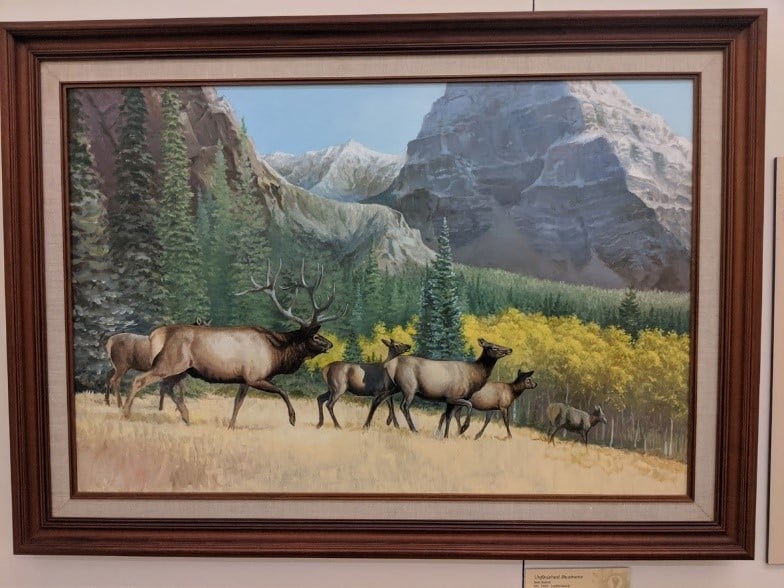
Figure 5. Unfinished Business by Ned Smith
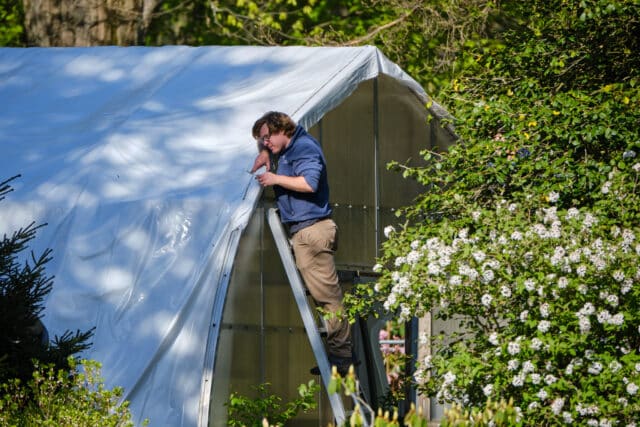
Connor Ryan, MS
Rhododendron Collections Manager
My interests sit at the intersection of ornamental horticulture, conservation, and botany. At Holden, my group is engaged in three things: curating the Rhododendron collection, breeding landscape plants, and stewarding the David G. Leach Research Station. The rhododendron collection is by far the largest collection at Holden, comprising some 2500 plants and 50+ acres. It is foundational for our decades long breeding program at the Leach Research Station and more recently has been used in support of plant biology research. We are slowly modernizing the collection, maintaining the extensive existing ornamental collection while increasing its utility for conservation and scholarship. Mostly this means increasing the representation of rhododendron species in the collection. We are also actively building a conservation collection for Rhododendron prunifolium and Ohio’s native rhododendrons. Our breeding work focuses on improved rhododendrons, mostly through resistance to root rot disease, zone 5 cold hardiness, and sun tolerance. We also work with other landscape plants, including evergreen azaleas, Pieris, Calycanthus, and Hamamelis. I can most frequently be found at HF&G’s David G. Leach Research Station in Madison, though I have an office at the arboretum and am there through winter. Get in touch if you’re interested in collaborating, utilizing our collections or facilities, or just want to talk plants.
